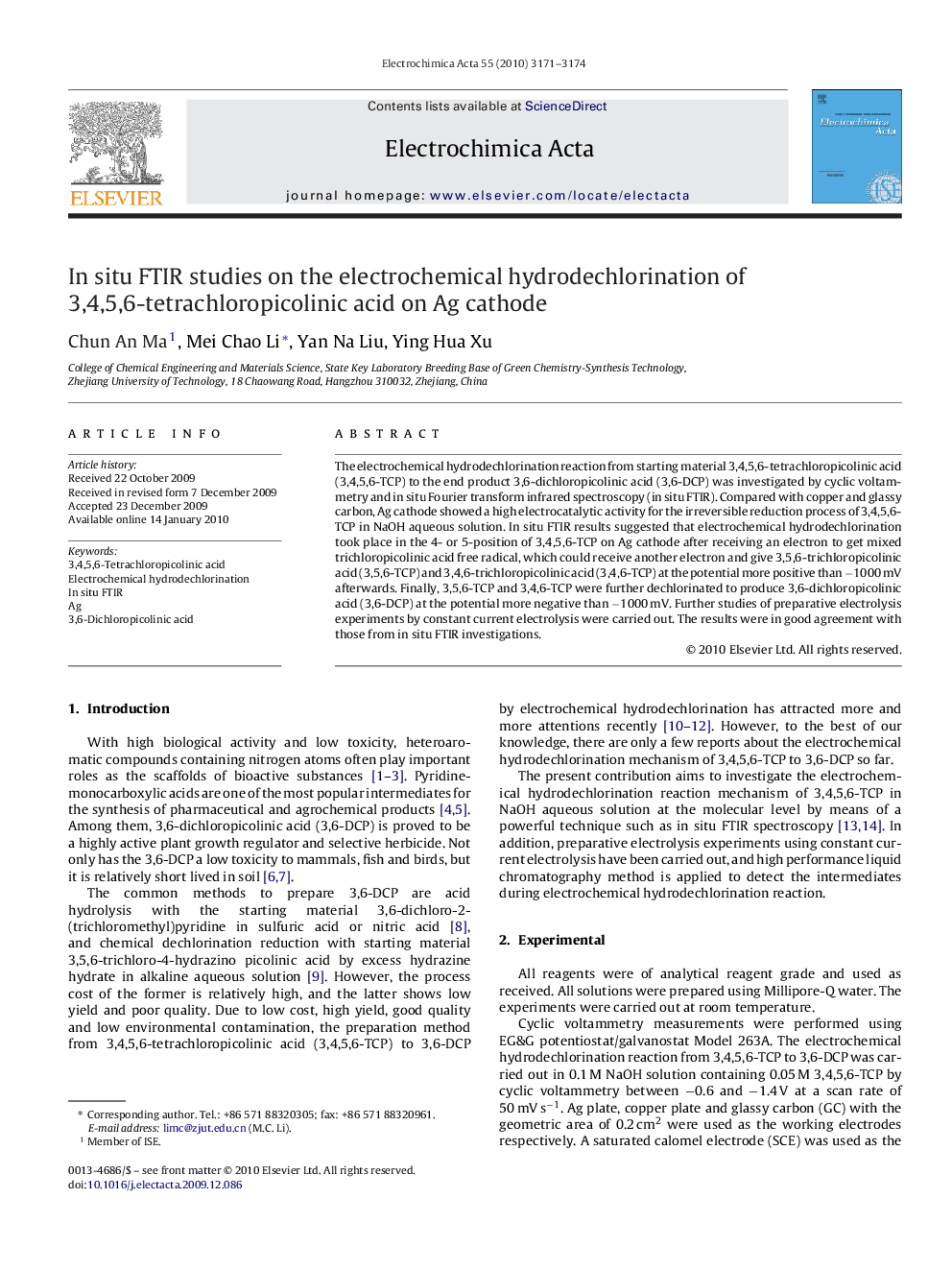| کد مقاله | کد نشریه | سال انتشار | مقاله انگلیسی | نسخه تمام متن |
|---|---|---|---|---|
| 191610 | 459725 | 2010 | 4 صفحه PDF | دانلود رایگان |

The electrochemical hydrodechlorination reaction from starting material 3,4,5,6-tetrachloropicolinic acid (3,4,5,6-TCP) to the end product 3,6-dichloropicolinic acid (3,6-DCP) was investigated by cyclic voltammetry and in situ Fourier transform infrared spectroscopy (in situ FTIR). Compared with copper and glassy carbon, Ag cathode showed a high electrocatalytic activity for the irreversible reduction process of 3,4,5,6-TCP in NaOH aqueous solution. In situ FTIR results suggested that electrochemical hydrodechlorination took place in the 4- or 5-position of 3,4,5,6-TCP on Ag cathode after receiving an electron to get mixed trichloropicolinic acid free radical, which could receive another electron and give 3,5,6-trichloropicolinic acid (3,5,6-TCP) and 3,4,6-trichloropicolinic acid (3,4,6-TCP) at the potential more positive than −1000 mV afterwards. Finally, 3,5,6-TCP and 3,4,6-TCP were further dechlorinated to produce 3,6-dichloropicolinic acid (3,6-DCP) at the potential more negative than −1000 mV. Further studies of preparative electrolysis experiments by constant current electrolysis were carried out. The results were in good agreement with those from in situ FTIR investigations.
Journal: Electrochimica Acta - Volume 55, Issue 9, 30 March 2010, Pages 3171–3174